Lab Visit: INTERPRETING THE POSTERIOR SAMPLE
April Wright, Southeastern Louisiana University
September 10, 2020
Talk slides, etc.
Where did this manuscript come from?

Sansom et al. 2018
Comparison between Bayesian and parsimony trees using measures of stratigraphic congruence
Sansom et al. 2018
| Metric | Meaning | Range |
|---|---|---|
| Stratigraphic Consistency Index (SCI) | Proportion of nodes for which the oldest descendent of that node is younger than the oldest descendent of that node’s ancestor | 0 to 1, with one being perfectly consistent |
| Minimum Implied Gap (MIG) | The sum of the branch lengths excluding tip durations | Positive numbers in millions of years |
| Relative Completeness Index (RCI) | MIG score proportional to the summed length of tip durations | All real numbers |
| Manhattan Stratigraphic Measure (MSM*) | MIG for the maximally stratigraphically consistent possible tree divided by the actual MIG | 0 to 1, with one being the most consistent |
| Gap Excess Ratio (GER) | MIG minus the best possible stratigraphic fit, scaled by the contrast between the best and worst fit values | 0 to 1, with one being the most consistent |
Sansom et al. 2018
This was a neat idea
- Stratigraphic congruence has been used to compare between competing hypotheses of topology
Sansom et al. 2018
Compared the most parsimonious set to 500 trees from the Bayesian posterior sample
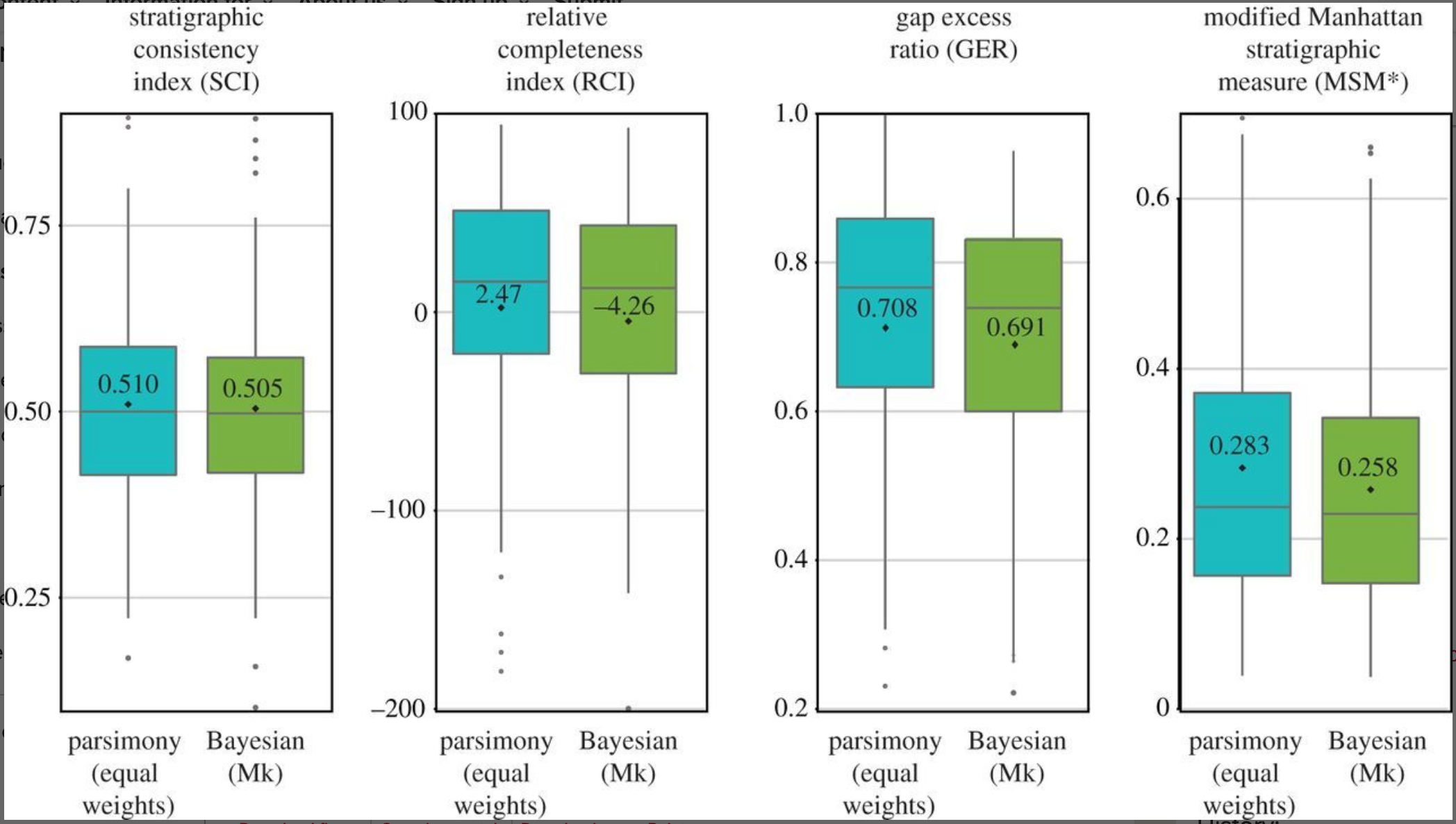
Bayesian Phylogenetics
We’ve been stuck in this modality of Bayesian vs. parsimony for a long time.
It is not exciting.
Bayesian Phylogenetics
We’ve been stuck in this modality of Bayesian vs. parsimony for a long time.
It is not exciting.
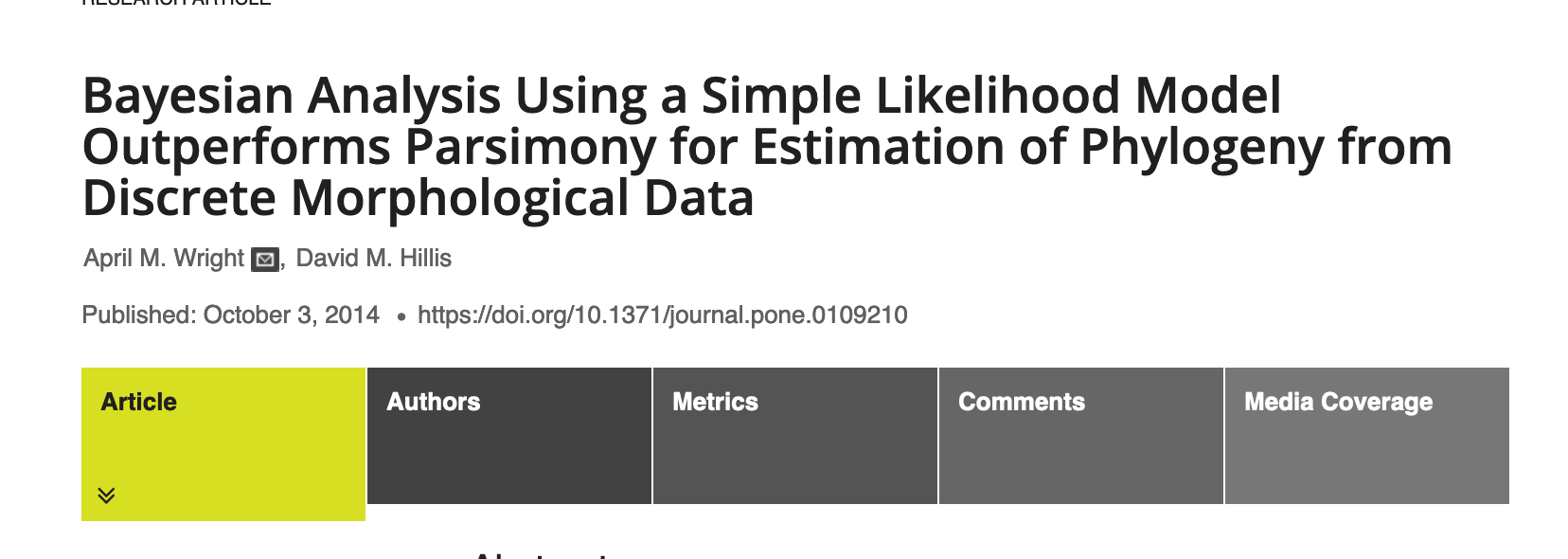
Bayesian Phylogenetics
We’ve been stuck in this modality of Bayesian vs. parsimony for a long time.
Bayesian morphological phylogenetics with the Mk model performs well enough
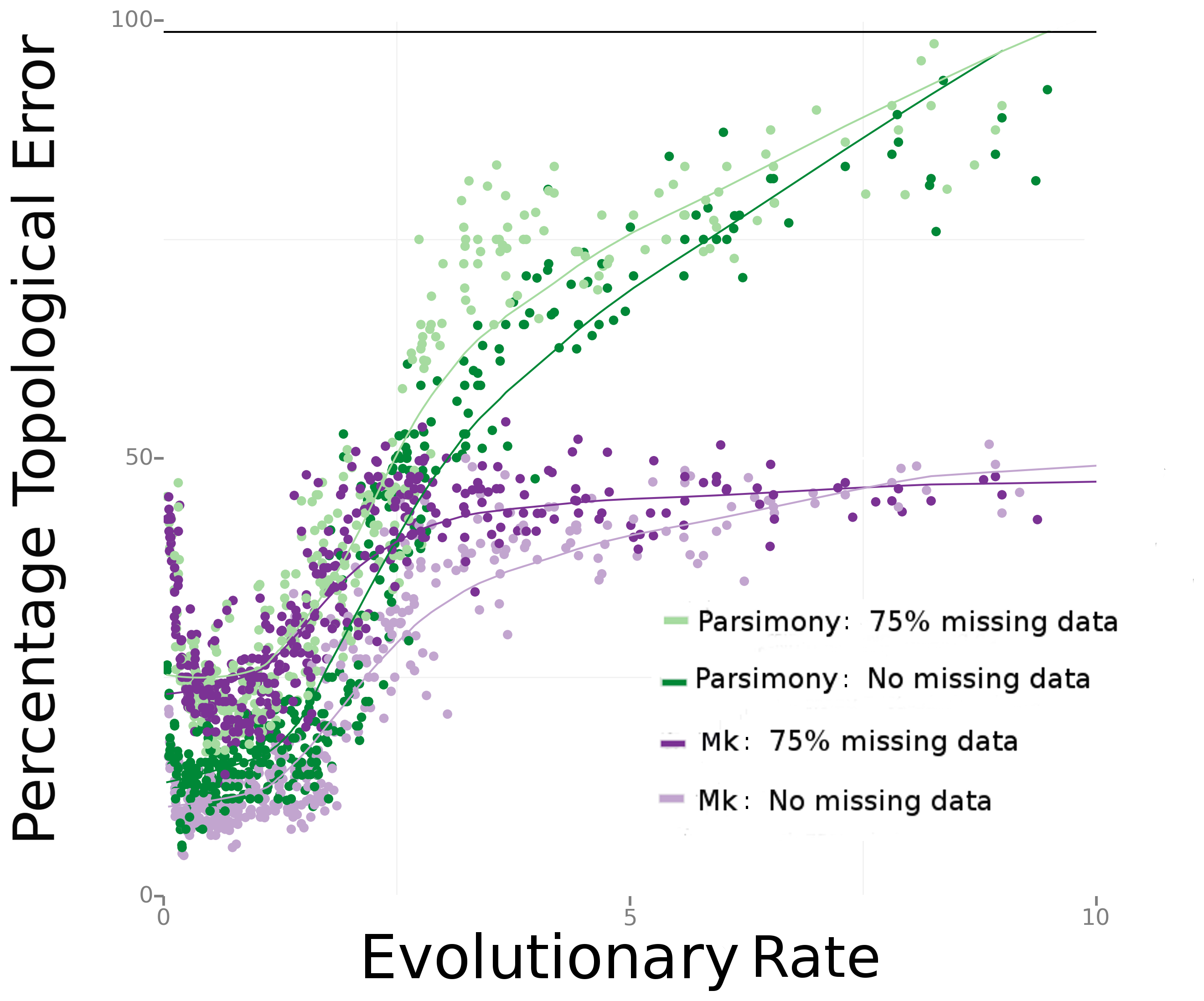
Bayesian Phylogenetics
We’ve been stuck in this modality of Bayesian vs. parsimony for a long time.
Bayesian phylogenetics estimates combinations of the tree topology + parameters that are plausible given a phylogenetic model and data
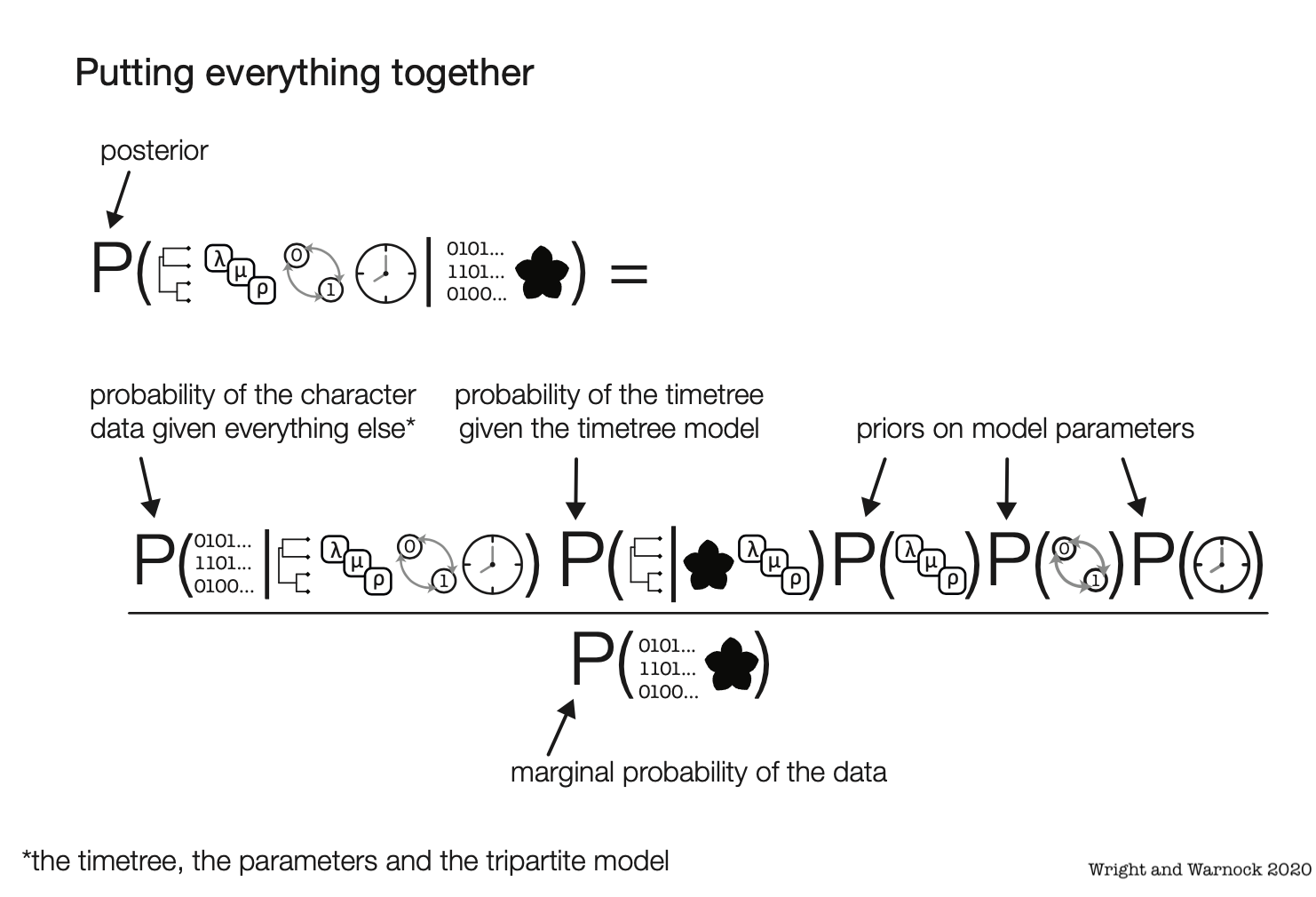
Bayesian Phylogenetics
Estimate combinations of the tree topology + parameters that are plausible given a phylogenetic model and data
- Solutions are visited in proportion to how likely they are
Bayesian Phylogenetics
Estimate combinations of the tree topology + parameters that are plausible given a phylogenetic model and data
- Solutions are visited in proportion to how likely they are
- A good tree will be visited many times
Bayesian Phylogenetics
Estimate combinations of the tree topology + parameters that are plausible given a phylogenetic model and data
- Solutions are visited in proportion to how likely they are
- A good tree will be visited many times
- The distribution of solutions is information
A forest or a tree

A forest or a tree

A forest or a tree
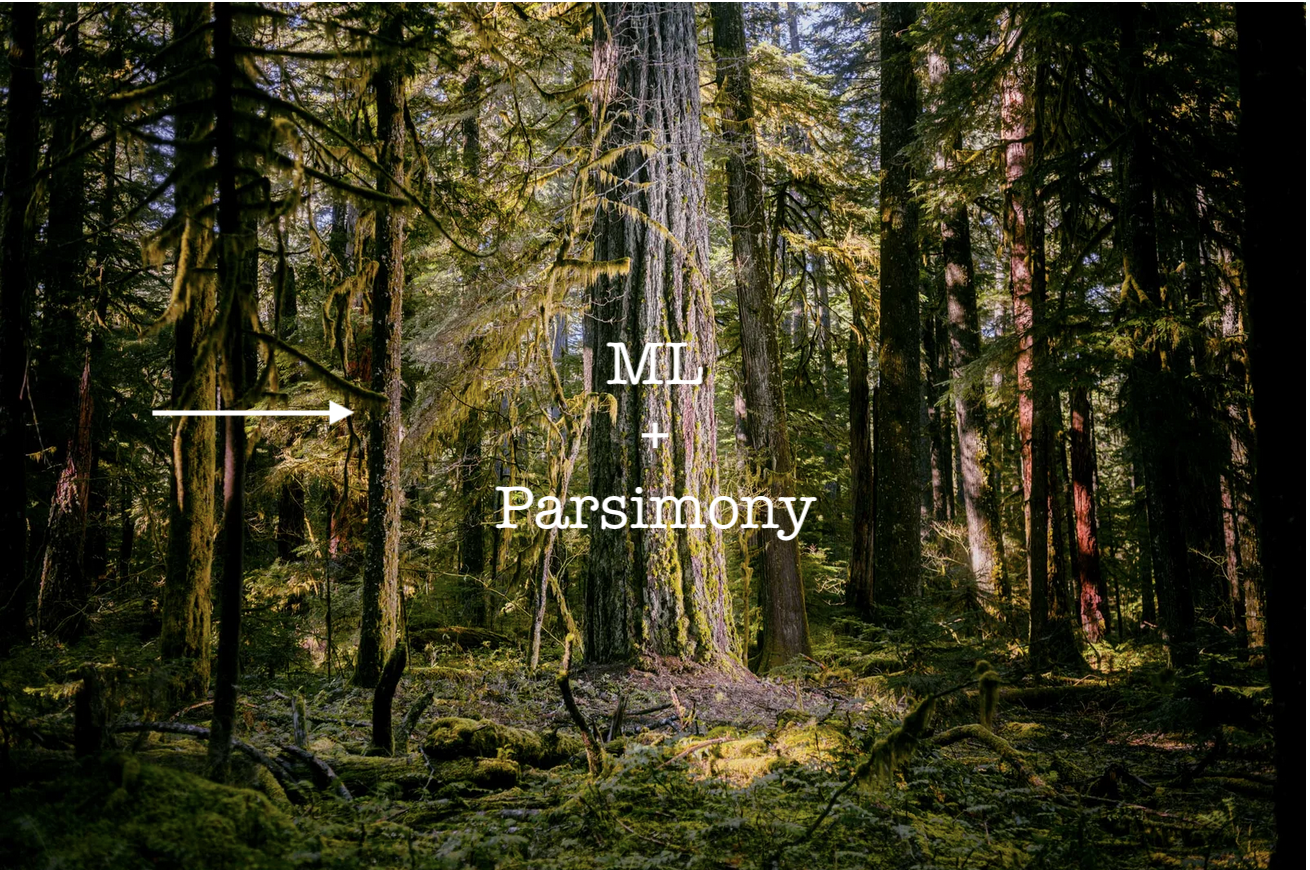
A forest or a tree
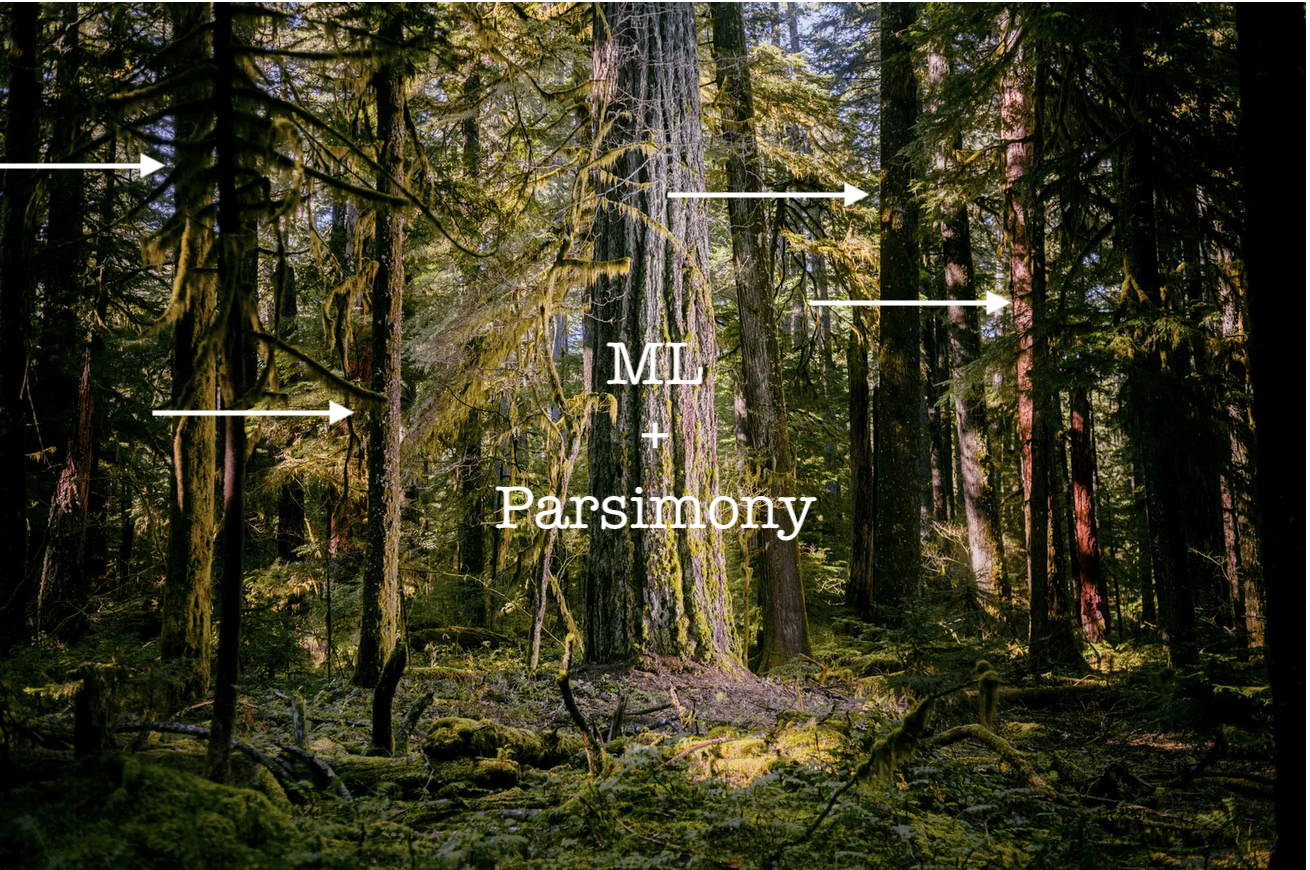
A forest or a tree
“We’ve replaced a maximum likelihood tree with the median or a distribution – is that better?” ~ Joëlle Barido-Sottani

Treeset visualizations
We wanted to show practitioners, who may or may not be very tech-savvy, how to easily make more sense of the posterior sample
Treeset visualizations
Graphics that display trees in 2-D space based on their proximity to one another 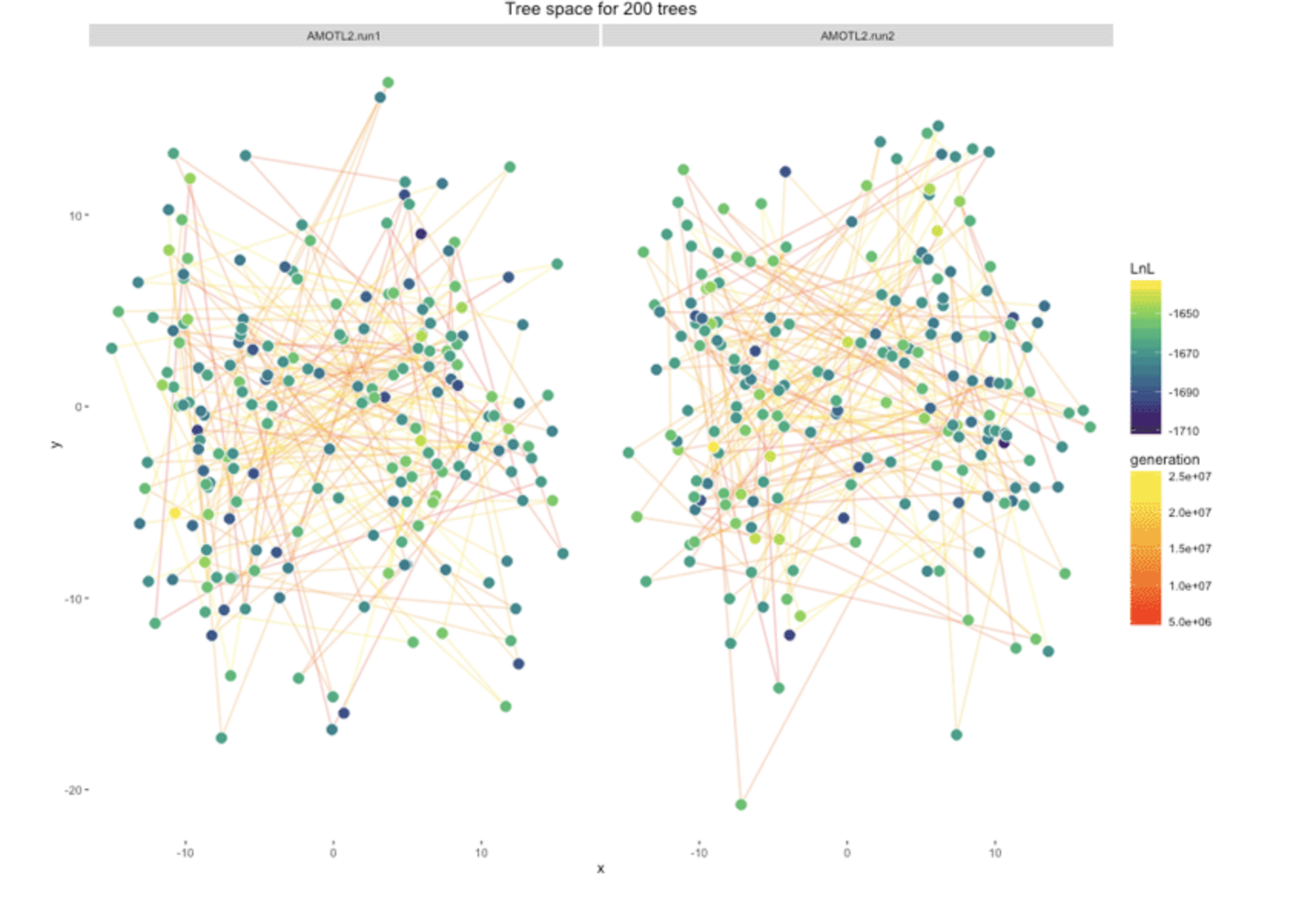
Methods
- Estimated parsimony trees (TNT, Goloboff and Catalano 2016) and Bayesian trees (Höhna et al 2016) for 127 published paleontological matrices
Methods
Estimated parsimony trees (TNT, Goloboff and Catalano 2016) and Bayesian trees (Höhna et al 2016) for 127 published paleontological matrices
Calculated stratigraphic congruence for all equally-parsimonious trees and the Bayesian posterior sample in the R package Strap (Bell and Lloyd 2015)
Methods
Estimated parsimony trees (TNT, Goloboff and Catalano 2016) and Bayesian trees (Höhna et al 2016) for 127 published paleontological matrices
Calculated stratigraphic congruence for all equally-parsimonious trees and the Bayesian posterior sample in the R package Strap (Bell and Lloyd 2015)
Modified the RWTY (Warren, Geneva and Lanfear 2017) to color points in the treespace by MIG score
Methods
Estimated parsimony trees (TNT, Goloboff and Catalano 2016) and Bayesian trees (Höhna et al 2016) for 127 published paleontological matrices
Calculated stratigraphic congruence for all equally-parsimonious trees and the Bayesian posterior sample in the R package Strap (Bell and Lloyd 2015)
Modified the RWTY (Warren, Geneva and Lanfear 2017) to color points in the treespace by MIG score
Also calculated some basic summary tables across the datasets using tidyverse
Results
- 63% of datasets had the highest average stratigraphic congruence with parsimony
Results
- 63% of datasets had the highest average stratigraphic congruence with parsimony
- In 94% of datasets the highest stratigraphic congruence value was observed in the Bayesian posterior sample
Results
- 63% of datasets had the highest average stratigraphic congruence with parsimony
- In 94% of datasets the highest stratigraphic congruence value was observed in the Bayesian posterior sample
- In 99% of datasets the lowest stratigraphic congruence was found in the Bayesian posterior sample
Results
- 63% of datasets had the highest average stratigraphic congruence with parsimony
- In 94% of datasets the highest stratigraphic congruence value was observed in the Bayesian posterior sample
- In 99% of datasets the lowest stratigraphic congruence was found in the Bayesian posterior sample
Results
Example dataset: Yates (2003)
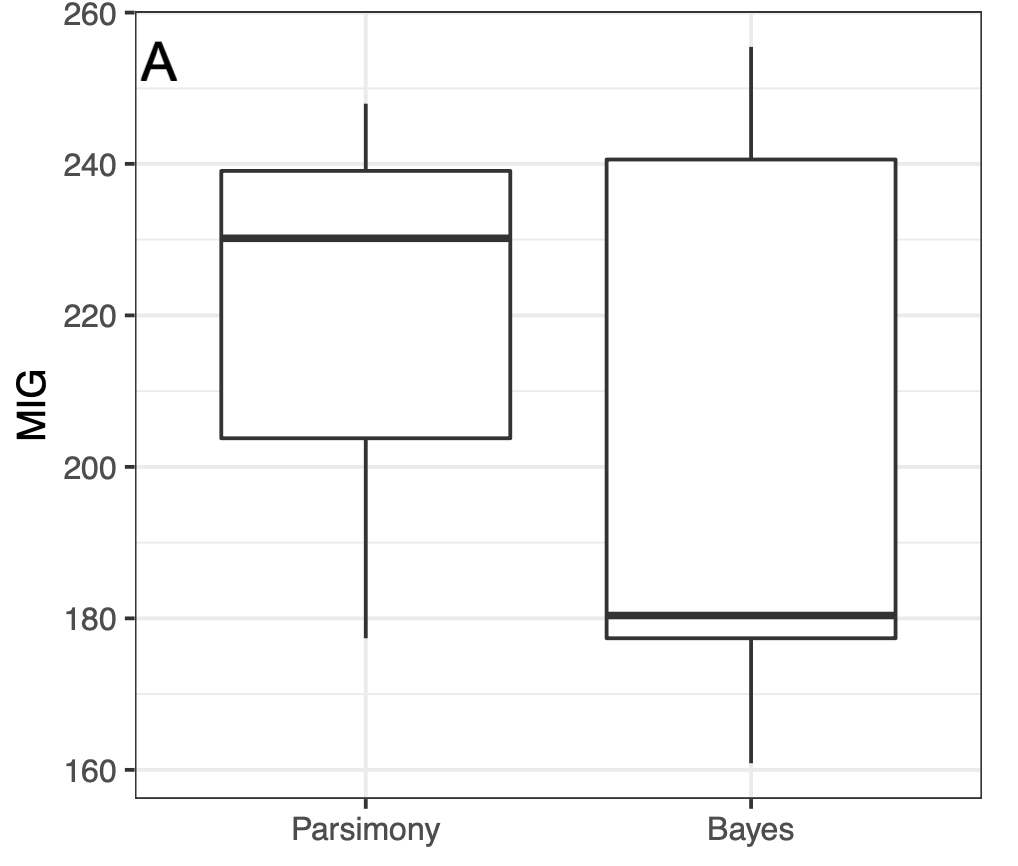
Results
Example dataset: Yates (2003)

Results
Example dataset: Demar 2013 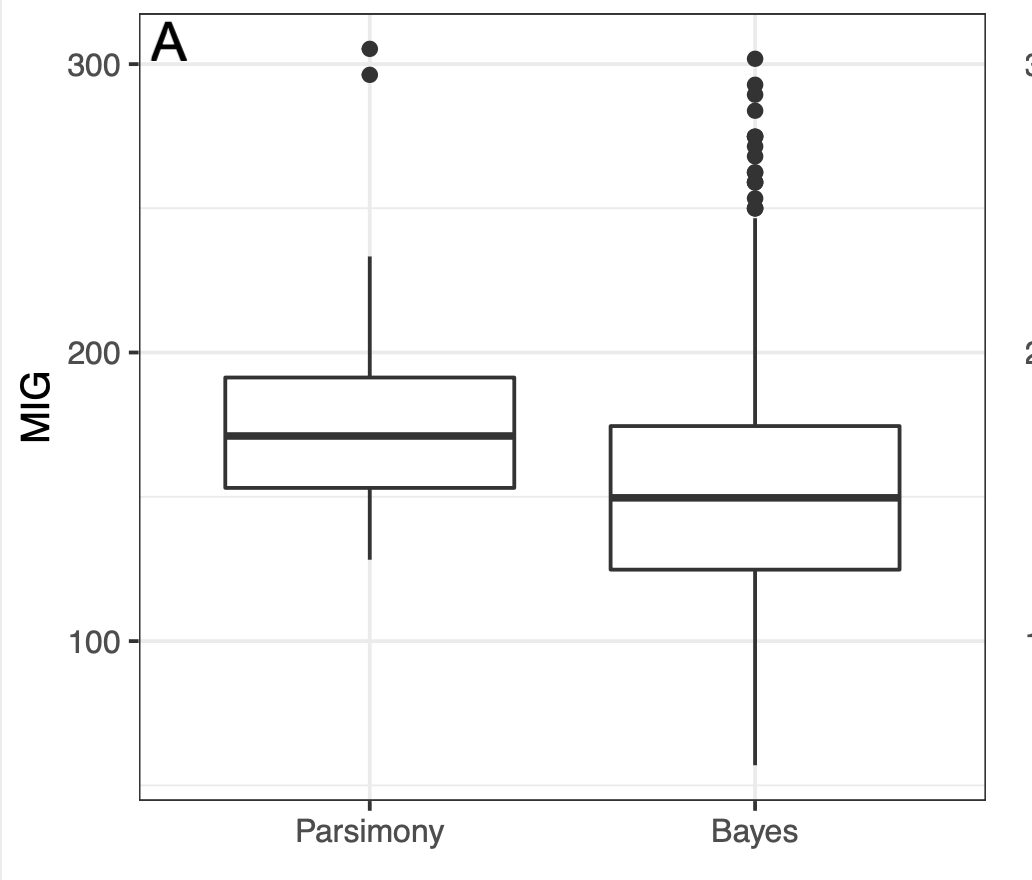
Results
Example dataset: Demar 2013 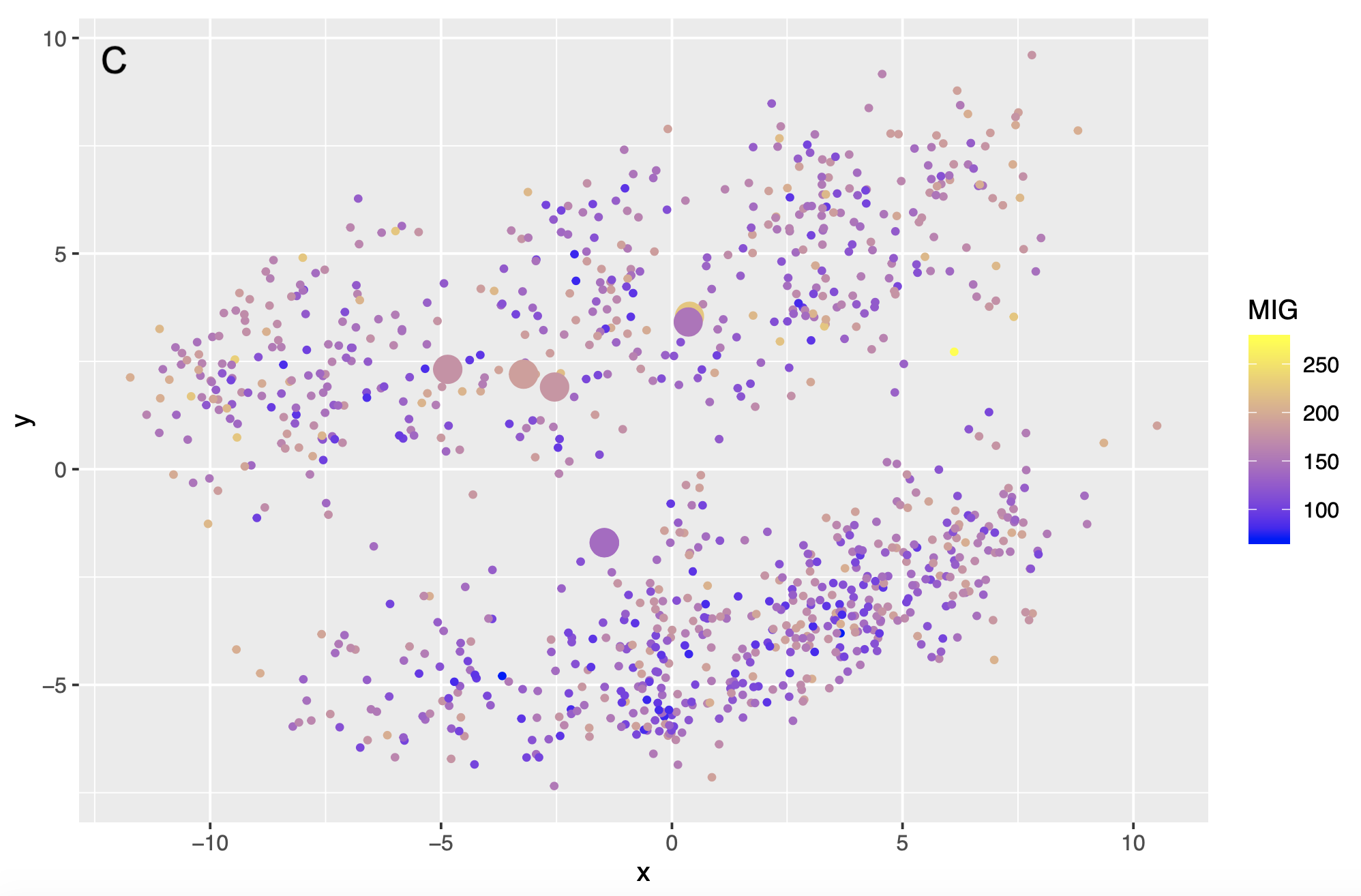
Summary
Bayesian methods estimate a sample of solutions
Summary
Bayesian methods estimate a sample of solutions
Unlike other methods, the distribution itself may be important
Summary
Bayesian methods estimate a sample of solutions
Unlike other methods, the distribution itself may be important
Looking at the full distribution of trees can provide us with information that one solution itself may not
Summary
We shouldn’t be asking “Is Bayes or parsimony better?”
Summary
We shouldn’t be asking “Is Bayes or parsimony better?”
We should instead be looking for ways to comfortably visualize variation in large datasets
Summary
We shouldn’t be asking “Is Bayes or parsimony better?”
We should instead be looking for ways to comfortably visualize variation in large datasets
Treespace visualizations provide an easy and intuitive way to do this
Thank You!
A sincere thank you to Sebastian for inviting me!
To Dan Warren and Rob Lanfear for the endlessly hackable RWTY software
And to my co-author and partner in crime, Dr. Graeme Lloyd
